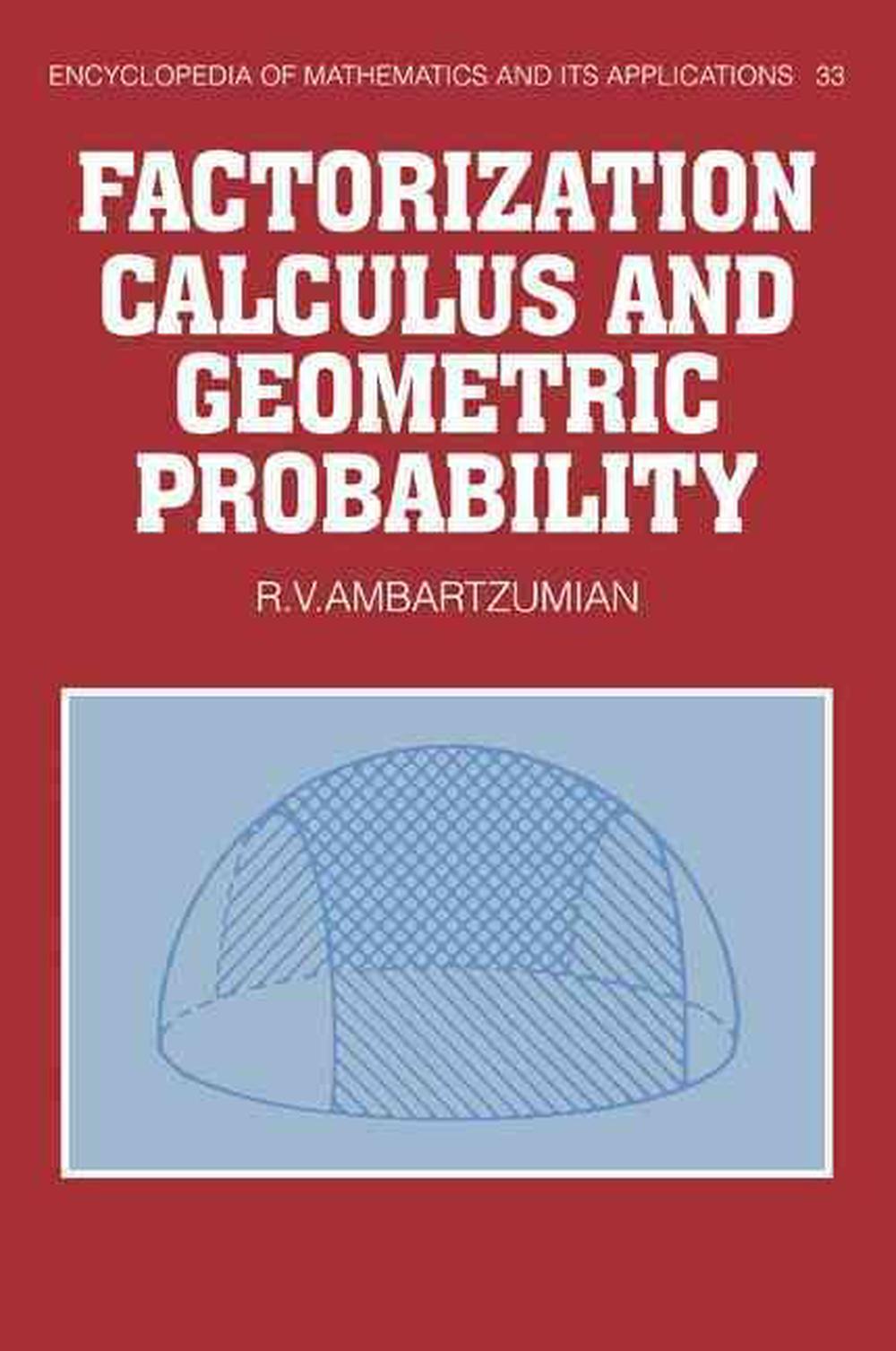
When you click on links to various merchants on this site and make a purchase, this can result in this site earning a commission. Affiliate programs and affiliations include, but are not limited to, the eBay Partner Network.
Factorization Calculus and Geometric Probability by R.V. Ambartzumian (English)

- Item No : 135895959444
- Condition : Brand New
- Brand : No brand Info
- Seller : the_nile
- Current Bid : US $65.47
-
* Item Description
-
The Nile on eBay

Factorization Calculus and Geometric Probability
by R.V. Ambartzumian
This unique book develops the classical subjects of geometric probability and integral geometry.
FORMAT
PaperbackLANGUAGE
EnglishCONDITION
Brand New
Publisher Description
This unique book develops the classical subjects of geometric probability and integral geometry, and the more modern one of stochastic geometry, in rather a novel way to provide a unifying framework in which they can be studied. The author focuses on factorisation properties of measures and probabilities implied by the assumption of their invariance with respect to a group, in order to investigate non-trivial factors. The study of these properties is the central theme of the book. Basic facts about integral geometry and random point process theory are developed in a simple geometric way, so that the whole approach is suitable for a non-specialist audience. Even in the later chapters, where the factorisation principles are applied to geometrical processes, the prerequisites are only standard courses on probability and analysis. The main ideas presented here have application to such areas as stereology and tomography, geometrical statistics, pattern and texture analysis. This book will be well suited as a starting point for individuals working in those areas to learn about the mathematical framework. It will also prove valuable as an introduction to geometric probability theory and integral geometry based on modern ideas.
Table of Contents
Preface; 1. Cavalieri principle and other prerequisites; 2. Measures invariant with respect to translations; 3. Measures invariant with respect to Euclidean motions; 4. Haar measures on groups of affine transformations; 5. Combinatorial integral geometry; 6. Basic integrals; 7. Stochastic point processes; 8. Palm distributions of point processes; 9. Poisson-generated geometrical processes; 10. Section through planar geometrical processes; References; Index.
Review
From the hardback review: 'The authors presented themselves with an enormous task in gathering material from widely scattered areas to illustrate a single theme. It is a measure of how well they have succeeded that everything now seems coherent and interwoven. For this they deserve our sincere thanks.' Bulletin of the London Mathematical Society From the hardback review: 'An opera of real analysis...' Bulletin of the American Mathematical Society
Review Quote
"The book is written in the characteristic style of the author, full of new and interesting ideas and, although in appearance the prerequisites are only standard courses on analysis and probability, it is not easy to read. It must be carefully thought out in many of its details, but the effort is well compensated by the great deal of information and new ways of thinking it supplies." L. A. Santalo, Mathematical Reviews
Promotional "Headline"
This unique book develops the classical subjects of geometric probability and integral geometry.
Description for Bookstore
This unique book develops the classical subjects of geometric probability and integral geometry, and the more modern one of stochastic geometry, in rather a novel way to provide a unifying framework in which they can be studied. The author focuses on factorisation properties of measures and probabilities implied by the assumption of their invariance with respect to a group, in order to investigate non-trivial factors.
Description for Library
This unique book develops the classical subjects of geometric probability and integral geometry, and the more modern one of stochastic geometry, in rather a novel way to provide a unifying framework in which they can be studied. The author focuses on factorisation properties of measures and probabilities implied by the assumption of their invariance with respect to a group, in order to investigate non-trivial factors.
Details
ISBN0521089786Author R.V. AmbartzumianShort Title FACTORIZATION CALCULUS & GEOMEPublisher Cambridge University PressSeries Encyclopedia of Mathematics and Its ApplicationsLanguage EnglishISBN-10 0521089786ISBN-13 9780521089784Media BookFormat PaperbackDEWEY 519.2Series Number 33Year 2008Publication Date 2008-11-30Imprint Cambridge University PressPlace of Publication CambridgeCountry of Publication United KingdomPages 300Illustrations Worked examples or ExercisesAudience Professional and ScholarlyUK Release Date 2008-11-06AU Release Date 2008-11-06NZ Release Date 2008-11-06


















